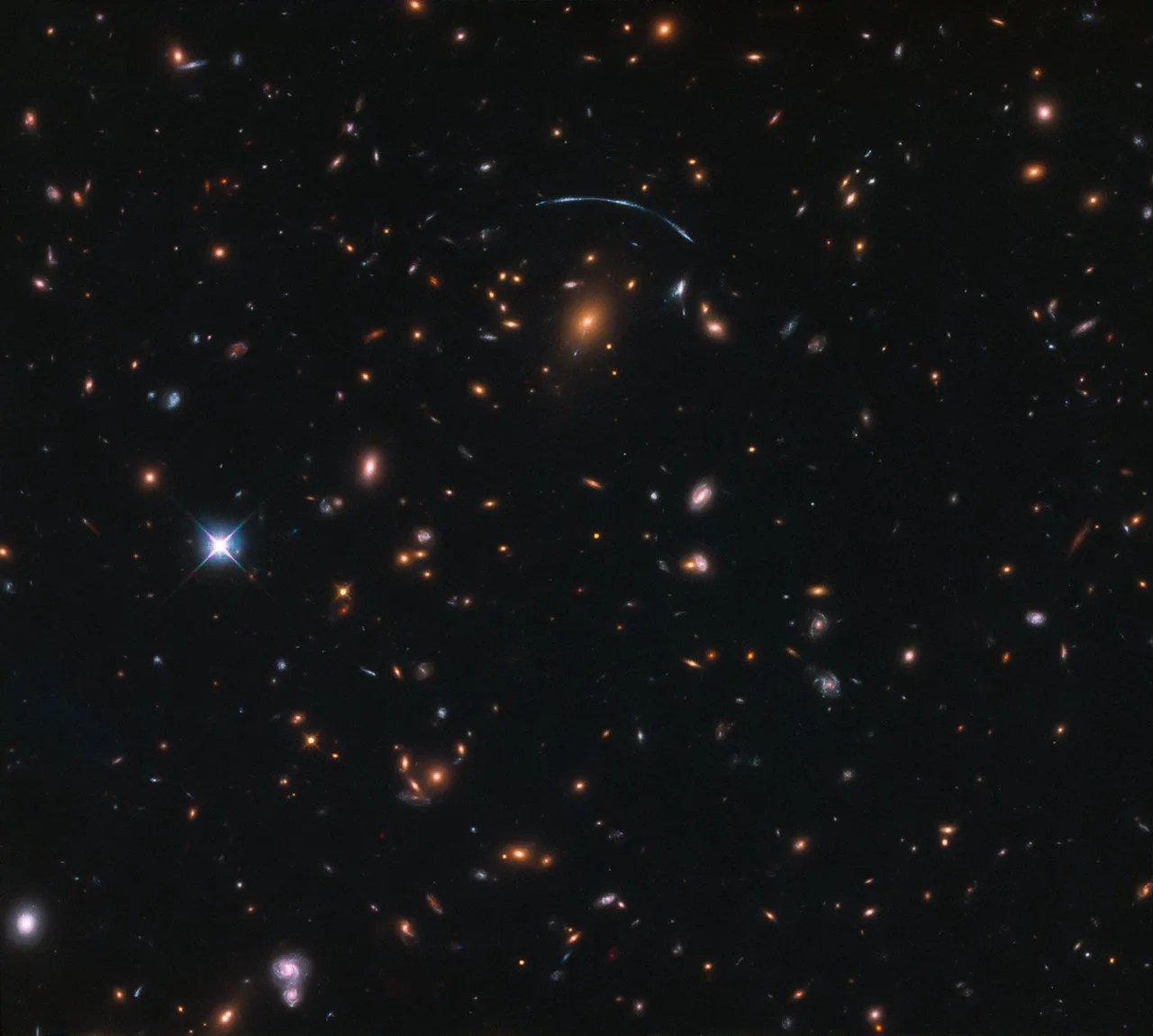1 min read

At first glance, a bright blue crescent immediately jumps out of this NASA/ESA Hubble Space Telescope image. Is it a bird? A plane? Evidence of extraterrestrial life? No — it’s a galaxy.
The shape of this galaxy admittedly appears to be somewhat bizarre, so confusion would be forgiven. This is due to a cosmic phenomenon called gravitational lensing. In this image, the gravitational influence of a massive galaxy cluster called SDSS J1110+6459 is causing the surrounding space-time to bend and warp, affecting the passage of any nearby light. A few more signs of lensing (streaks, blobs, curved lines, distorted shapes) can be seen dotted around the image.
Just below the right side of the prominent, blue arc appears a rare and interesting type of galaxy called a jellyfish galaxy, which seems to be dripping bright blue material. These are galaxies that lose gas via a process called galactic ram-pressure stripping, where the drag caused by the galaxy moving through space causes gas to be stripped away.
Text credit: European Space Agency (ESA)







